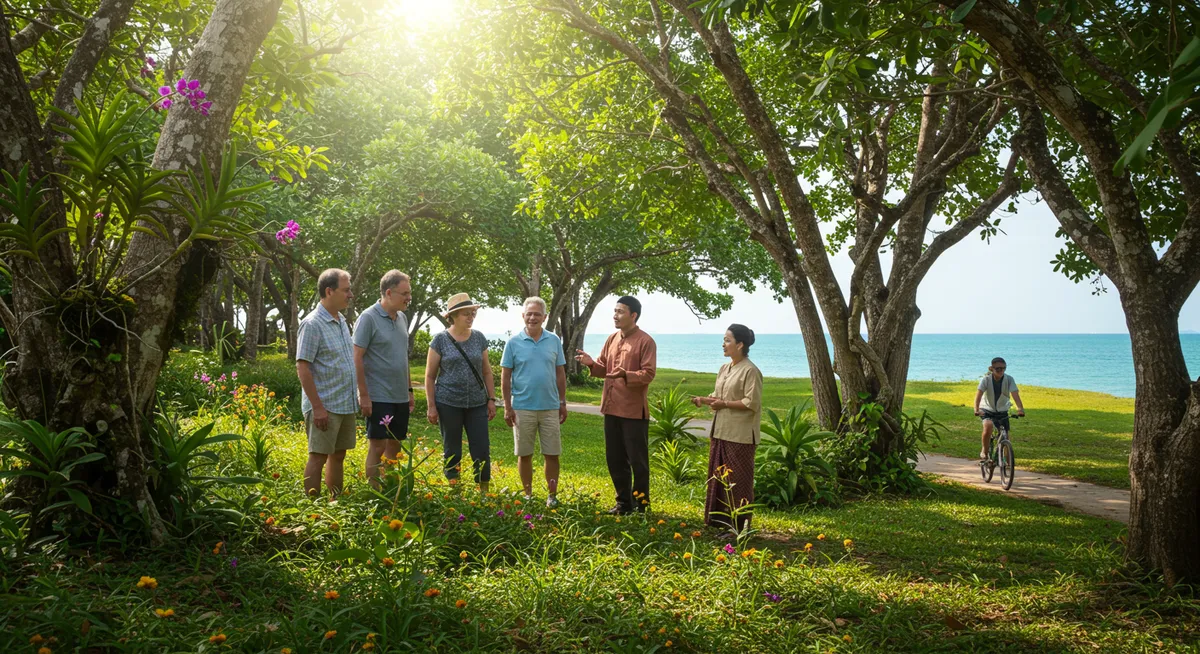
Eco-Tourism Activities in Hua Hin, Thailand
Table of Contents
Want to find the best nature experiences for this destination? Chat with our nature tourism specialist!
Get Nature TipsCategory: ecotourism-activities-hua-hin-thailand
Your Guide to Sustainable Adventures in Hua Hin
As a passionate advocate for responsible travel, I've spent considerable time exploring destinations that prioritize sustainability. Hua Hin, Thailand, often recognized for its beaches, also offers incredible opportunities for eco-tourism. These experiences allow visitors to connect deeply with nature and local culture, ensuring their adventures have a positive impact. When planning your trip, consider activities that protect the environment and support local communities, enhancing your journey while preserving this beautiful region for future generations. For a broader perspective on sustainable travel, explore Tourist Nature.Exploring National Parks & Wildlife Sanctuaries
Hua Hin is a gateway to remarkable natural preserves, offering prime eco-tourism activities in Thailand. For instance, Khao Sam Roi Yot National Park, a short drive away, boasts stunning limestone karsts, diverse birdlife, and the mysterious Phraya Nakhon Cave. It's a fantastic spot for wildlife observation and gentle hiking. My personal tip: visit early morning to avoid crowds and catch the best light for photography. Another gem is the Pala-U Waterfall, located within the Kaeng Krachan National Park complex, providing lush rainforest treks and refreshing dips. These protected areas are vital for biodiversity, showcasing the region's commitment to nature conservation.Ethical Elephant Encounters & Animal Sanctuaries
Engaging with wildlife responsibly is a cornerstone of true eco-tourism. In Hua Hin, visitors can choose ethical elephant sanctuaries that prioritize animal welfare over commercial exploitation. These respected establishments, unlike traditional riding camps, focus on rescue and rehabilitation, allowing you to observe these magnificent creatures in a natural, respectful setting. It’s an incredibly moving experience to witness their joy and freedom. Furthermore, look for local wildlife rescue centers or nature conservation projects. From my experience, supporting these initiatives directly contributes to preserving Thailand's unique fauna, ensuring humane treatment and long-term survival for species often vulnerable to human impact. These are among the most impactful eco-tourism activities Hua Hin offers.Responsible Beach & Coastal Activities
Hua Hin's beautiful coastline provides ample opportunity for eco-friendly enjoyment. Instead of solely focusing on crowded main beaches, seek out less disturbed areas perfect for serene walks or birdwatching. Exploring hidden coves and pristine sands exemplifies mindful eco-tourism activities. Consider guided kayaking or paddleboarding tours in mangrove forests, which are crucial ecosystems protecting coastlines and supporting marine life. Remember to always practice "leave no trace" principles, keeping beaches pristine for everyone. I always carry a reusable water bottle and pick up any litter I see; it makes a huge difference. For more information on serene spots, check out the best beaches for nature lovers in Hua Hin.Supporting Local Communities & Eco-Friendly Initiatives
A significant aspect of eco-tourism involves directly benefiting local populations and sustainable practices. When in Hua Hin, make an effort to purchase handicrafts from community markets or dine at local, family-run restaurants that source ingredients regionally. This supports the local economy directly. Seek out accommodations that actively implement green practices, such as water conservation, waste reduction, and energy efficiency. Many smaller guesthouses and boutique resorts are leading the way in sustainable tourism. By choosing these options, travelers contribute to a more responsible and equitable tourism model, reinforcing the positive impact of Hua Hin nature attractions and community well-being. This approach truly defines impactful eco-tourism.Frequently Asked Questions
What are the best times of year for eco-tourism in Hua Hin?
The cool, dry season from November to February is ideal for outdoor eco-tourism activities in Hua Hin, offering comfortable temperatures for exploring national parks and wildlife sanctuaries. The rainy season (May to October) can be lush and beautiful, but some activities might be affected by heavier downpours.
Are there any specific eco-friendly accommodations recommended in Hua Hin?
While specific recommendations vary, look for hotels and guesthouses in Hua Hin that highlight their commitment to sustainability. Check their websites for policies on waste reduction, water conservation, energy efficiency, and support for local communities. Online reviews often mention such initiatives.
How can I ensure my visit to Hua Hin is truly sustainable?
To ensure your visit supports eco-tourism activities Hua Hin offers, choose ethical tour operators, minimize your waste (refill water bottles, avoid single-use plastics), respect local customs and wildlife, support local businesses directly, and stay informed about responsible travel guidelines for the region.